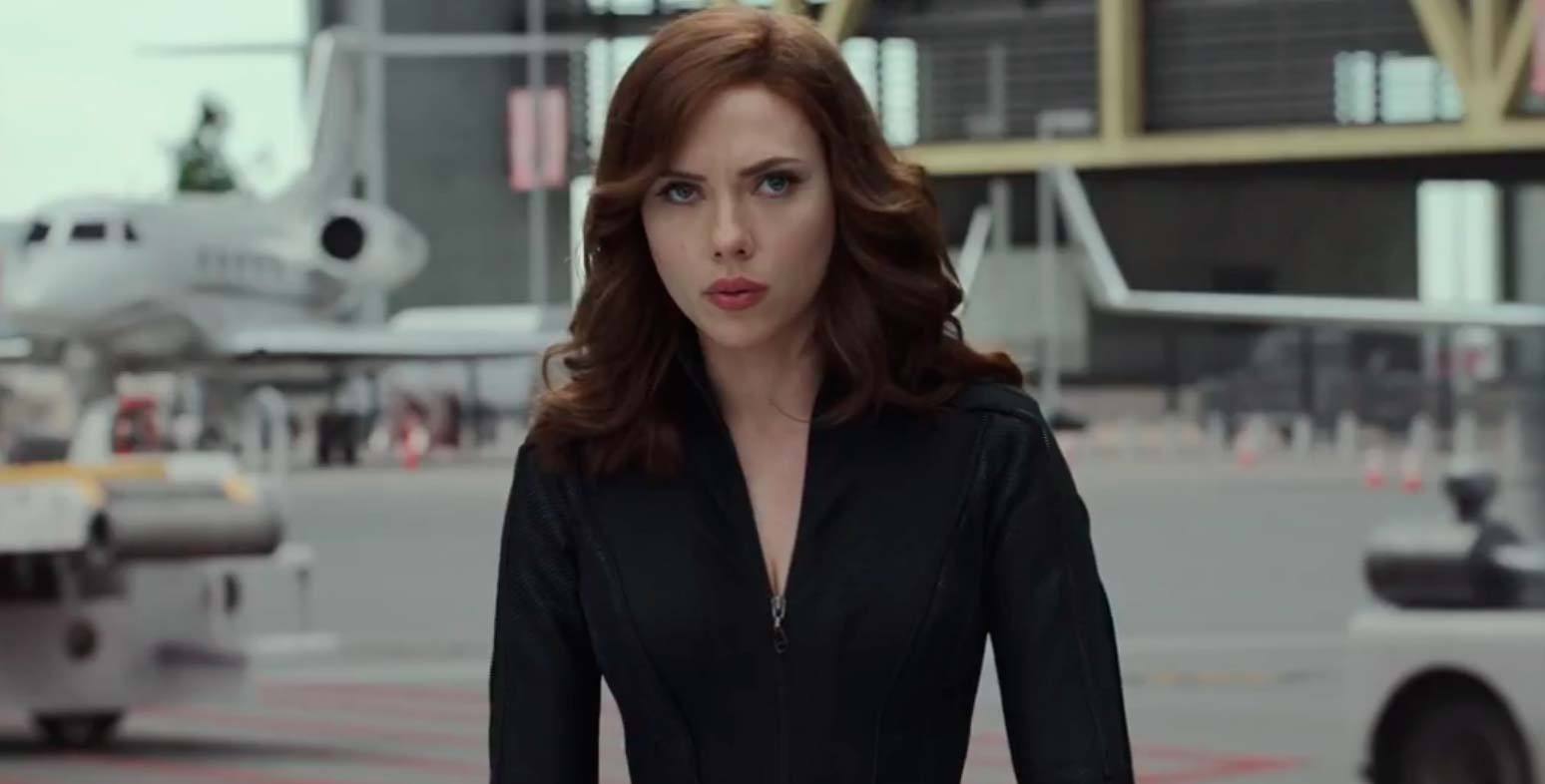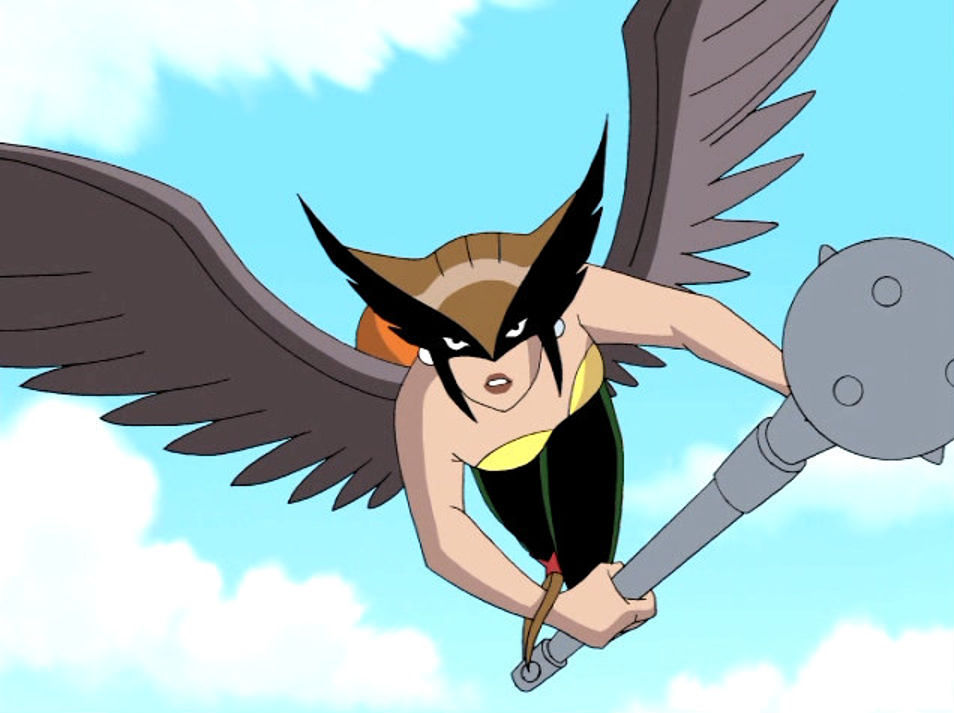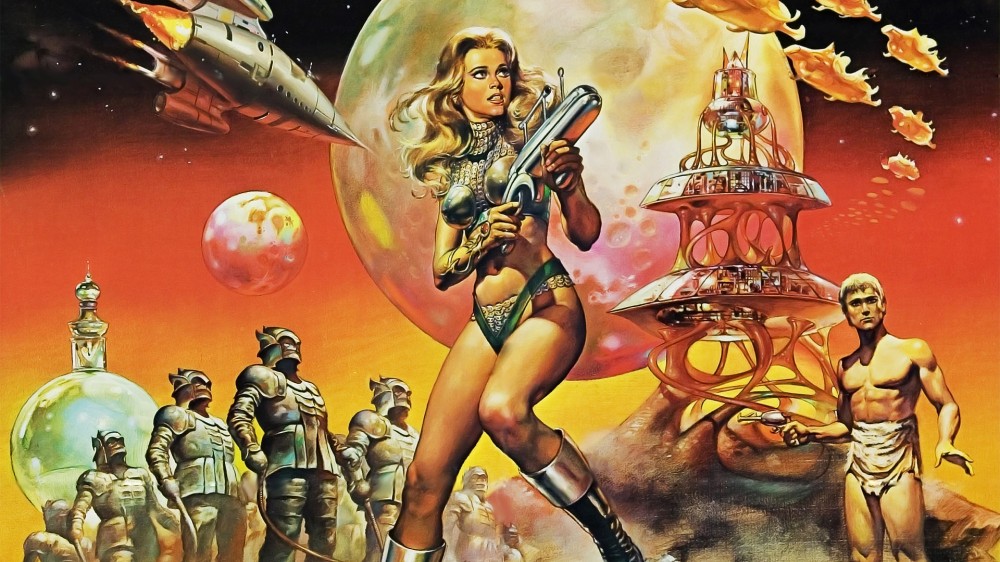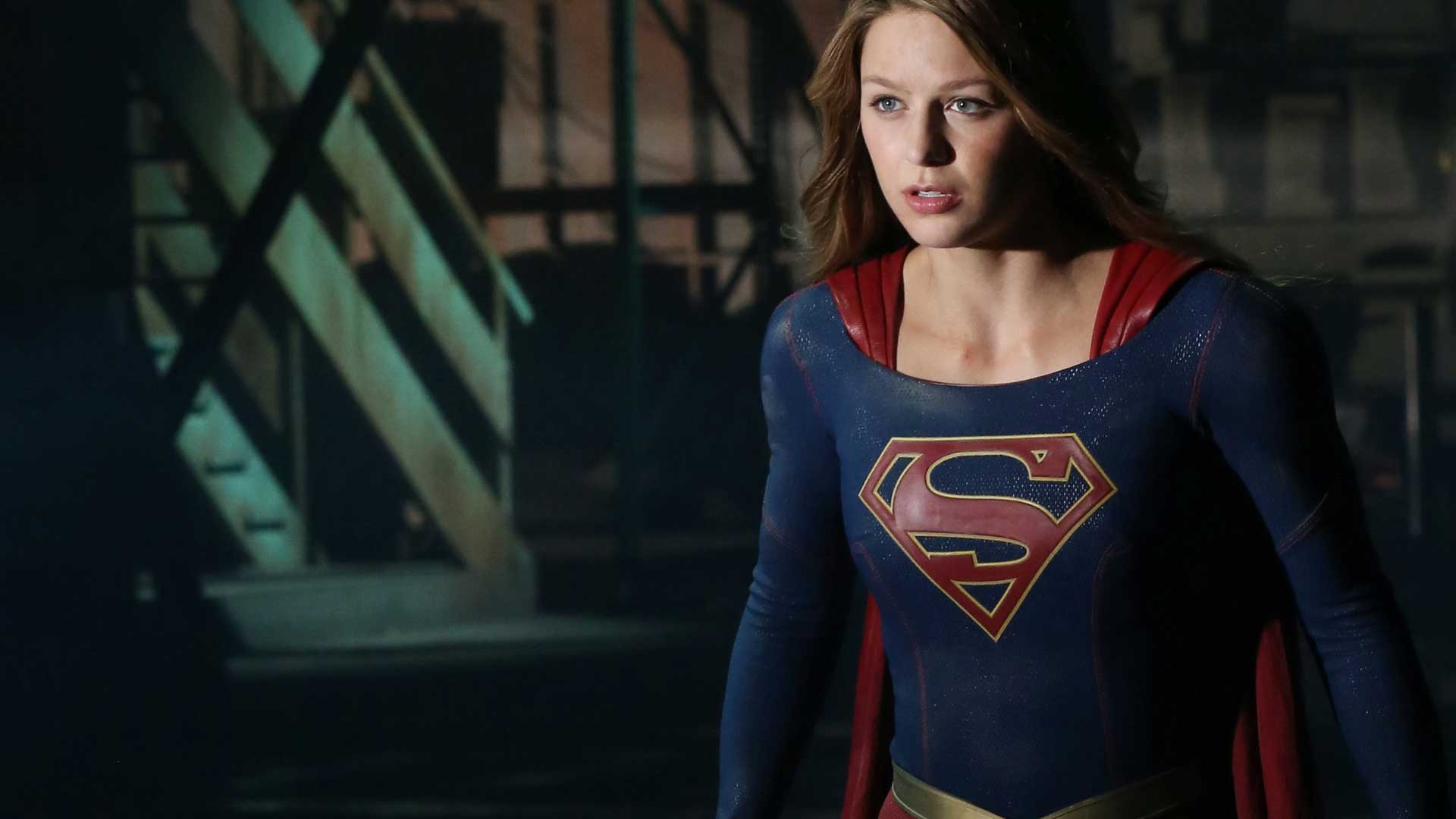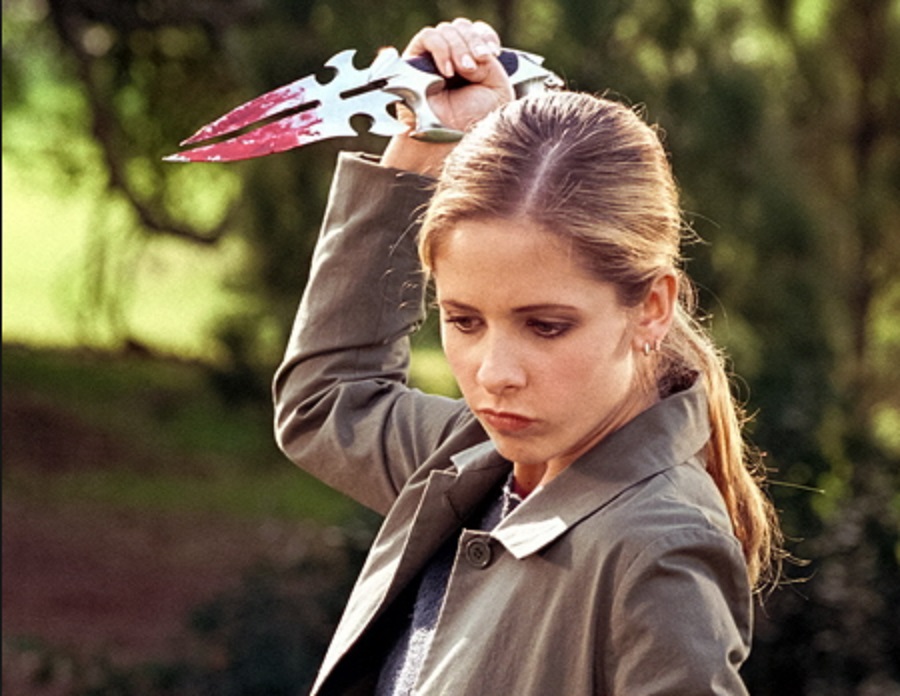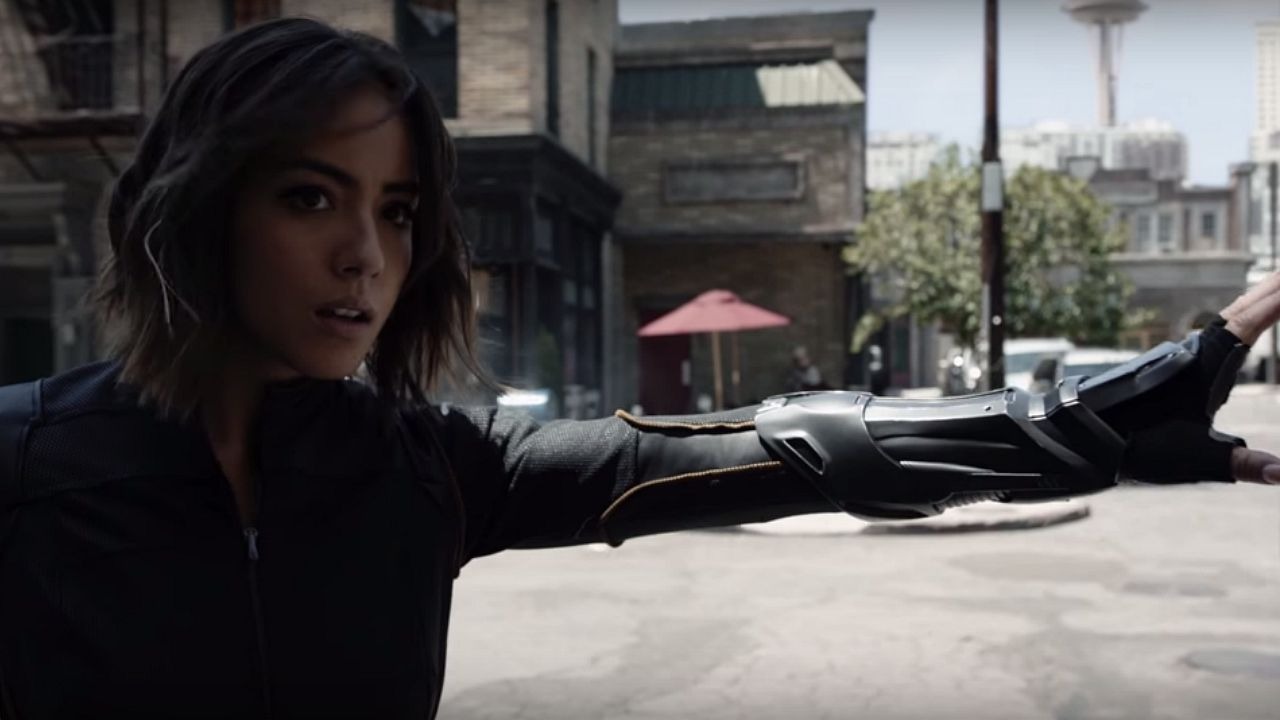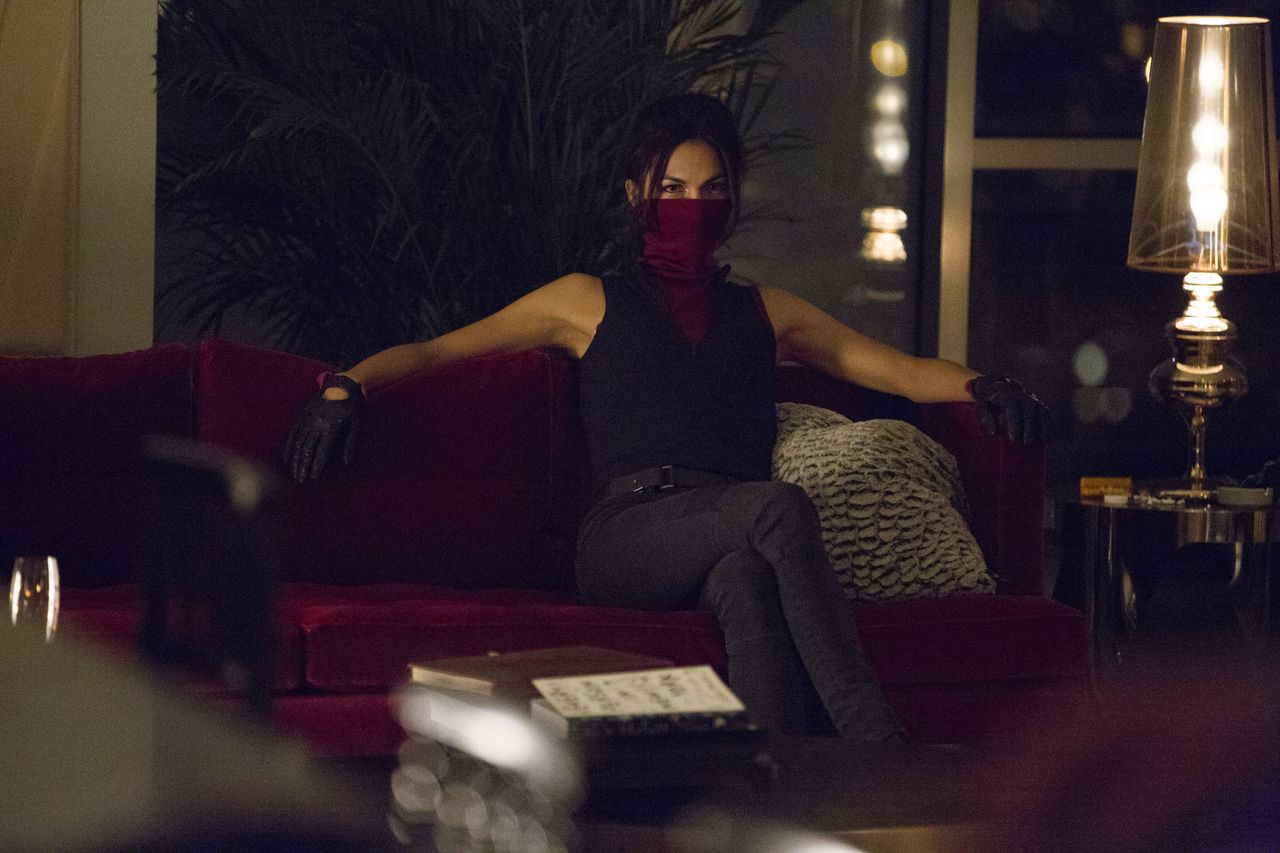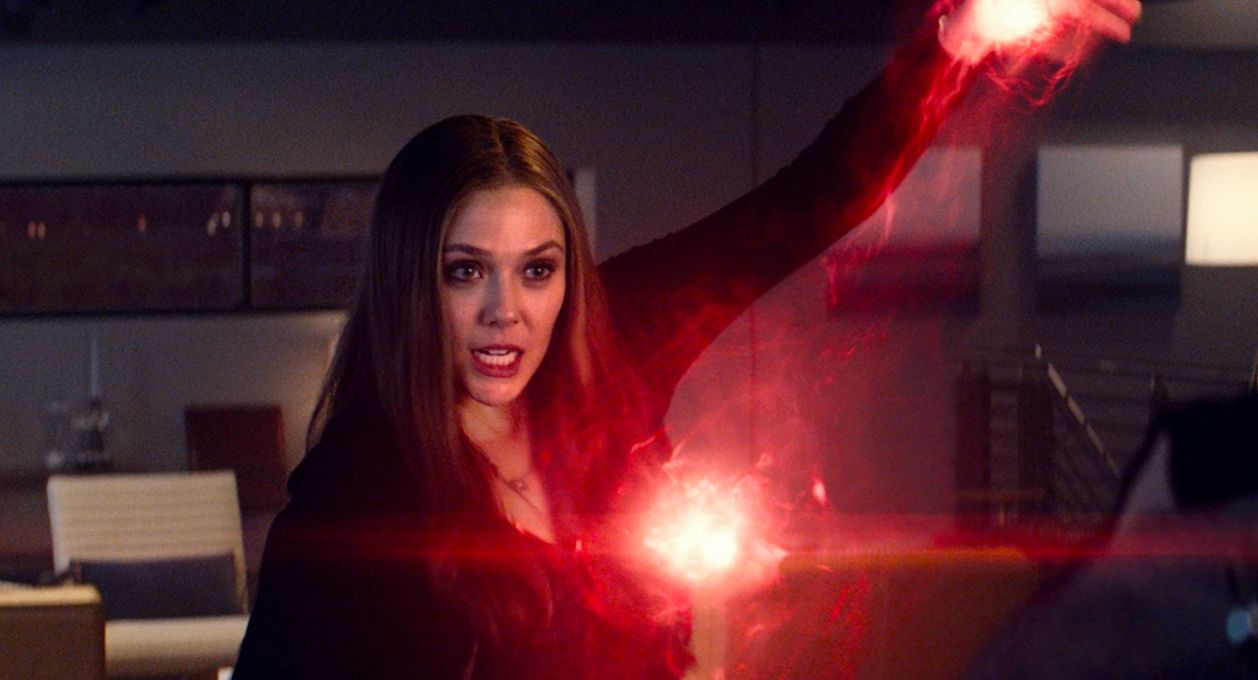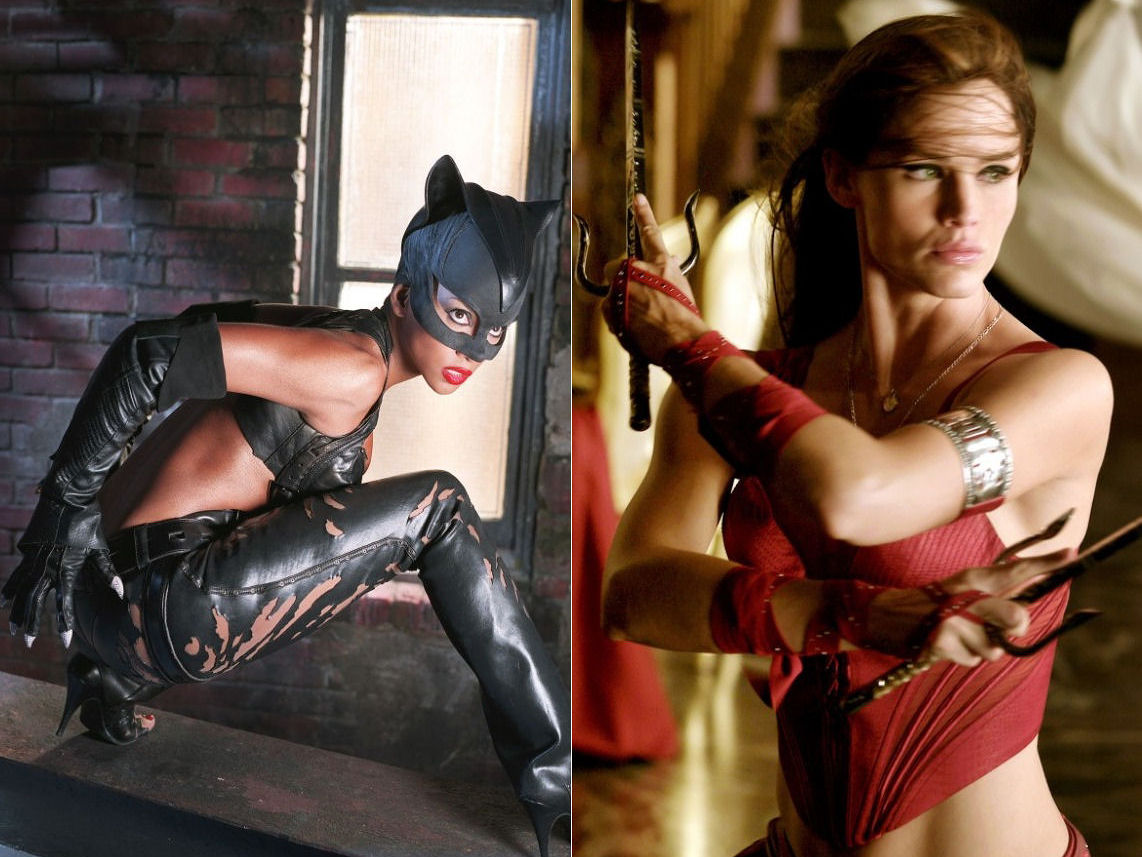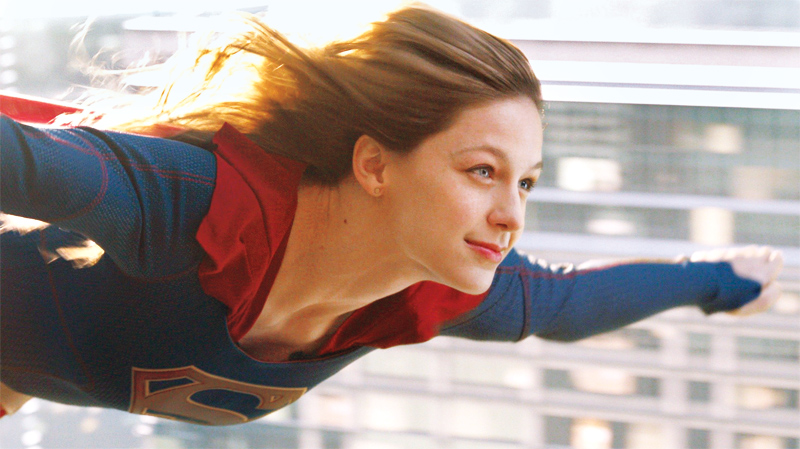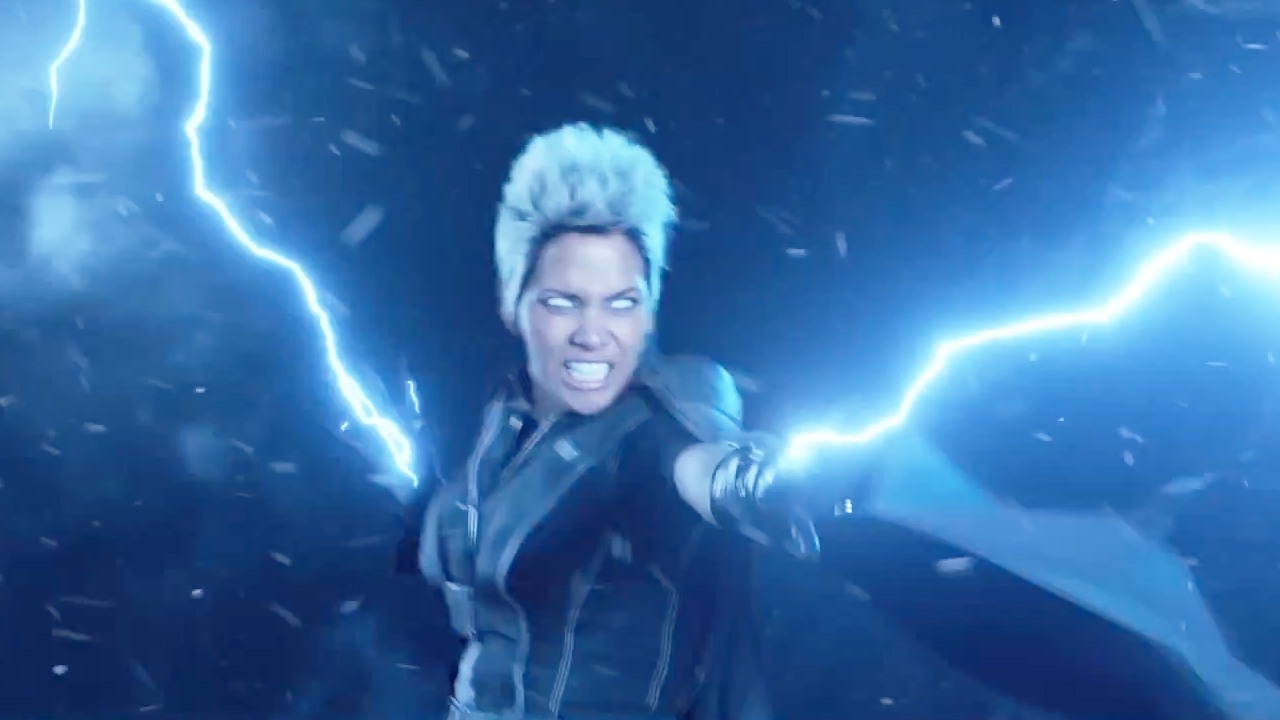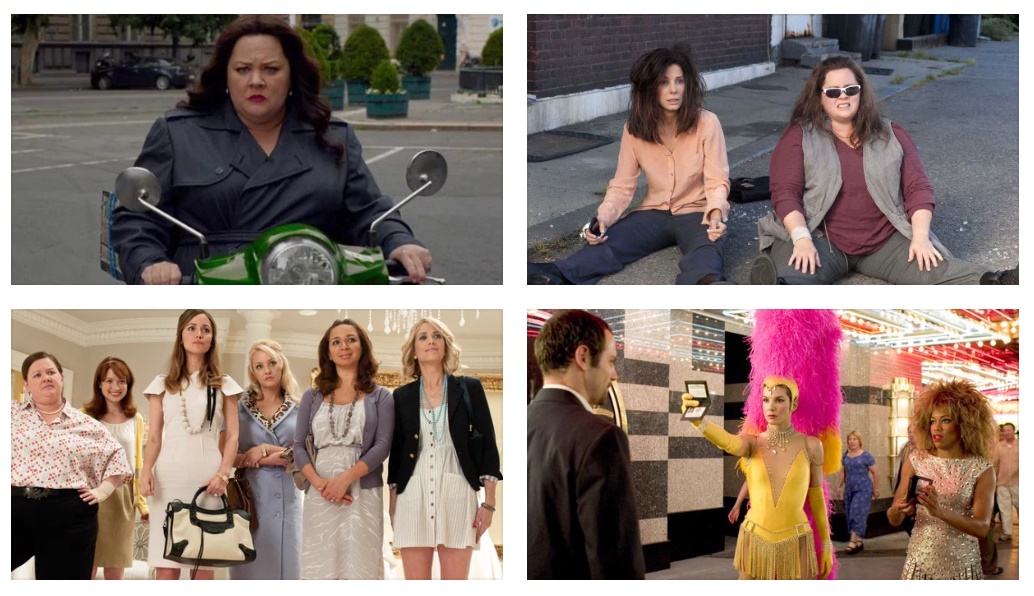
This guest post written by Kayleigh Watson appears as part of our theme week on Superheroines.
Black Widow: the original female Avenger. Actually, up until recently, she was the only female Avenger. Scarlett Johansson had her work cut out in carrying the unspoken burden of representing women everywhere in one of the highest profile, highest-grossing franchises to ever exist onscreen.
To date, her character has only ever been written by and directed by men. It is apparent that the linchpins of the Marvel Cinematic Universe are very male skewed, with the only woman currently having contributed to screenplays being Guardians of the Galaxy’s Nicole Perlman, who is returning for Captain Marvel alongside recent recruit Meg LeFauve. Perlman herself stated that writing Captain Marvel has been a far more stressful project than Guardians of the Galaxy ever was, and that she and LeFauve will catch themselves saying:
“‘Wait a minute, what are we saying [here] about women in power?’ Then we have to say, ‘Why are we getting so hung up on that? We should just tell the best story and build the best character.'”
As nice – and preferable – as that would be, it simply is not possible currently. Every woman onscreen in the Marvel Cinematic Universe (MCU) is a minority compared to the sheer amount of male characters and therefore automatically complicit in representing every woman, everywhere, all at once.

If there were more women, then this would be less of an issue, but with one female lead protagonist per area or sub-franchise within the MCU, it is simply not the case.
Let’s break it down; first, the love interests: Pepper Potts (Gwyneth Paltrow, Iron Man franchise), Betty Ross (the never-to-be-seen-again Liv Tyler, The Incredible Hulk), Jane Foster (Natalie Portman, Thor franchise), Peggy Carter (Hayley Atwell, Captain America franchise); the “super-heroines”/allies: Gamora (Zoe Saldana, Guardians of the Galaxy), Scarlet Witch (Elizabeth Olsen, Avengers: Age of Ultron/ Captain America: Civil War), Hope van Dyne (Evangeline Lilly, Ant-Man), Maria Hill (Colbie Smulders, as part of S.H.I.E.L.D).
And the antagonists: um, Nebula (Karen Gillan, Guardians of the Galaxy).
Of course, there is some crossover in the above – Scarlet Witch was once an active antagonist, whilst Peggy Carter morphed from Captain America’s (Chris Evans) sidekick to valued, rounded lead protagonist in the TV series Agent Carter (now regrettably cancelled after its second series) – but when it comes to the film series itself, female character progression is largely limited, unlike that of the male characters.

It is this factor alone why Black Widow is so important. She is the longest standing female protagonist within the Marvel film franchise, having starred in Iron Man 2, The Avengers, Captain America: The Winter Soldier, Avengers: Age of Ultron and most recently, Captain America: Civil War. She was the only female Avenger in both films (until Scarlet Witch switched sides at the end of Age of Ultron), and as such was subject to being the onscreen vessel of female representation in a superhero super-team otherwise occupied by straight white men.
A lot of pressure rested on her shoulders and, for the most part, Joss Whedon — director and screenwriter of The Avengers, of Buffy the Vampire Slayer fame, and a writer renowned for strong female representation in his work – got it right. Black Widow was proactive and strong; professionally, she was not treated any differently onscreen by any male character (outside of an aside near the start of the film where a Russian captor declares her “nothing but a pretty face”). She embodied a typically male approach to the role – a spy, a fighter, trusted with liaising and retrieving individuals. She was not referred to in a sexual manner. She was valued for what she brought to the table as an active participant in the narrative, which is, quite often, a rarity in itself.
Yet when we step back from the film itself and regard Black Widow, her relations, backstory, and aesthetics in regards to the wider narrative of the character, it is clear that not everything is as perfect as it initially seems.
Yes, she is the only woman serving in the Avengers in an Avengers film to date – though no doubt that is set to change with Scarlet Witch joining the fray in Captain America: Civil War. That’s tokenism, and let’s not even get started with the lack of racial representation within the two Avengers films. Next door to that, we find voyeurism, for as wonderfully as Scarlett Johansson manages to pull off that skin-tight cat-suit, do varying camera angles of her rear really benefit, well, anything (the same goes for the bare male torso, to a degree)? She is a visual Fighting Fuck Toy for the Male Gaze in a manner that Johansson has been for a large portion of her acting career, her attractiveness having her very often typecast as various femme fatales in films including The Spirit, Under The Skin, Her (yes, even her voice is that sexy).
Black Widow manages to be sultry in a subtle way, yet one of which her male counterparts never feel the need to be, for even when they are removing their shirts (hello Thor and Captain America), their partial nudity is never really as overtly sexual as the implied, fully-clothed, alluring physicality of Black Widow. Male nakedness, even when recognized by other characters – such as Portman’s reaction as Dr. Jane Foster in the first Thor film – is presented in some practical purpose, even if it’s merely a change of shirt. Black Widow’s sexual allure is ever-present, to the point of it making her a femme fatale, which is itself apt, given her implied dalliances with, at some point, every member of the original Avengers team bar Thor.
First appearing as Natalie Rushman, the sexy secretary alias (yes, really) of Natasha Romanoff in Iron Man 2 of whom Tony Stark takes an interest (Pepper Potts declares Rushman as a “very expensive sexual harassment lawsuit” waiting to happen), then as Black Widow in The Avengers, she flits from thereon in between that femme fatale mode to mothering figure. Following Hawkeye’s (Jeremy Renner) possession by Loki (Tom Hiddleston), Black Widow makes it her personal (she owes him a debt) mission to wake him from his reverie, hinting at a less-than-professional past, whilst in Captain America: The Winter Soldier she and Cap share a tense bout of therapy whilst on mission.
Age of Ultron sees Johansson’s character haphazardly paired as the “beauty” in a “Beauty and the Beast” romance with green-eyed angry-guy the Hulk (Mark Ruffalo); she is the only one capable of calming him — thanks to her womanly ways — and the two bond over perceiving themselves as a “monster,” she due to her forced sterilization as part of the Black Widow program and subsequent inability to bear children (thanks Joss Whedon, for this clumsy handling of backstory vs. sideplot) and he for more, er, obvious reasons.
So yes, we are left as of yet with a monstrous, mothering femme fatale. We appear to be ticking off tropes here, so it almost appears laughable that a single character has somehow managed to embody every perceivable onscreen female threat towards men. In Black Widow being such a threat to masculinity – via the presumptuous attempts to consume with her monstrously suffocating, simultaneously mothering and seductive ways – it is only natural that the camera attempts to regain control of her via its voyeuristic lens, right?
Wrong. For in their attempt to expand on Black Widow’s backstory – something that intrigued many fans due to her persistent lack of a solo venture – all Whedon and company have resulted in is a fetishization of her emotional trauma. As stated by Johansson, Black Widow “never made an active choice. [She’s] a product of other people’s imposition.” The fact that her backstory contains emotional trauma and systematic abuse is not a surprise. But for it to be so trivially handled in a high-octane superhero menagerie instead of a solo film presumes that the perceived (aka Male 60%: Female 40%) target audience merely has no time for women matters, but in reality perhaps that is just the writers. Even had it been handled as part of a Captain America or Iron Man sequel, odds are that it would have fared better, given there being less clamor per character for screen time, and for it to have been handled instead during one scene of an Avengers film is simply lazy.
So yes, in trying to regain control of the female Avenger, the lens has to make her a sexual object whilst the narrative fetishizes her as emotionally damaged and such, less than. Black Widow’s past is her weakness, and she always tries to make up for her dark days as an assassin; as both she and Loki allude to in The Avengers, she has red on her ledger. In working for espionage agency S.H.I.E.L.D, she gets to make up for some of her murky past. She also serves the patriarchy, with it being an international, militarized organisation: this is a reconcile-or-die situation, and as such the character of Black Widow has effectively been tamed.
All of this sounds very ominous and, in reading this, you are probably wondering exactly why and how Black Widow can be perceived as the “realest” heroine within the MCU. The unfortunate truth is, despite her being the embodiment of so many tropes, she is the original female Avenger and equal (minus her and Hawkeye’s lack of supernatural ability – or expensive suits) to that of her male Avenger peers. She is not typically made a Damsel in Distress as love interests often are; she saves the other Avengers, albeit, occasionally in a mothering fashion. Throughout films she has been rounded out in a manner that many other token women of other MCU sub-franchises simply do not have the privilege of, and in that way, is it better that her character be fleshed-out in a contrived and melodramatic manner or not at all?
It is a tough call, but in Marvel films (not the television series) she is the only female character who surpasses one-dimensionality, and as sad as it is to say, in the MCU this is the best that we get.
See also at Bitch Flicks: ‘Avengers; Age of Ultron’s Black Widow Blunders; Black Widow Is More Than Just a Pretty Face in ‘Captain America: The Winter Soldier’; Do Black Widow and Scarlet Witch Bring Female Power to ‘Avengers: Age of Ultron’?; The Women of ‘Captain America: The Winter Soldier’; “Did I Step on Your Moment?” The Seductive and Psychological Violence of Female Superheroes
Kayleigh Watson is a writer and occasional illustrator from the UK. After realizing that her childhood ambition of being a vet would mean she would actually have to cut up pets (ew), she decided life would be better spent absorbing art and telling others about it. Her years spent studying for her BA (Hons) English and Creative Writing also involved music blogging, reading SF, and watching lots of Buffy. She currently writes about music for female-centric site The Girls Are as well as talking film and TV (or trying to) at her new blog Post-Modern Sleaze. A collection of her work can be found at what kayleigh said, and she tweets about all of the above under @kaylwattson. Her GIF game is strong.
